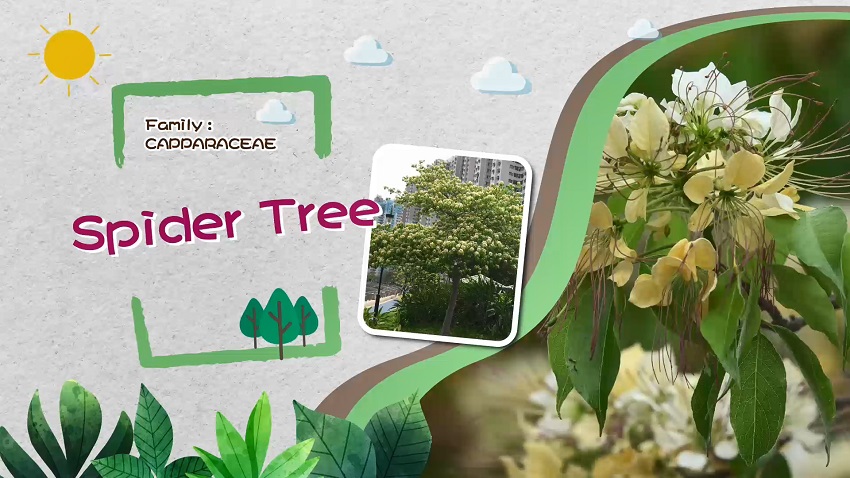| Origins | Guangdong, Guangxi, Yunnan, Hainan and Fujian. Also distributed in other tropical regions of Asia. |
|---|---|
| Applications | Given the impressive massive blossoms with vivid leaves during its flowering period from February to April, with densely arranged flowers hanging on the branchlets, Spider Trees are highly valued ornamentals and commonly used as street trees. Recorded by Flora Reipublicae Popularis Sinicae, in Shiping and Jianshui of Yunnan, the local people pick its young leaves and pickle them in salt as a food, hence the species were given the Chinese name “Vegetables from Heads of Tree (樹頭菜)”. Its timber can be supplied for the production of plates, musical instruments, models etc. The peel of its fruits can be used as dye. Utilized in Traditional Chinese Medicine, its leaves and stem can clear heat, detoxify and strengthen the stomach. While its roots and bark can relieve pain, remove dampness and activate meridians. |
| Meanings of name | The origin of the Chinese name “Vegetables from Heads of Tree (樹頭菜)” is discussed above. The English name “Spider Tree” describes many stamens on its flower, which are purplish red, slender, long and exserted from corolla, looking like there are numerous “spiders” growing out from the tree. |







